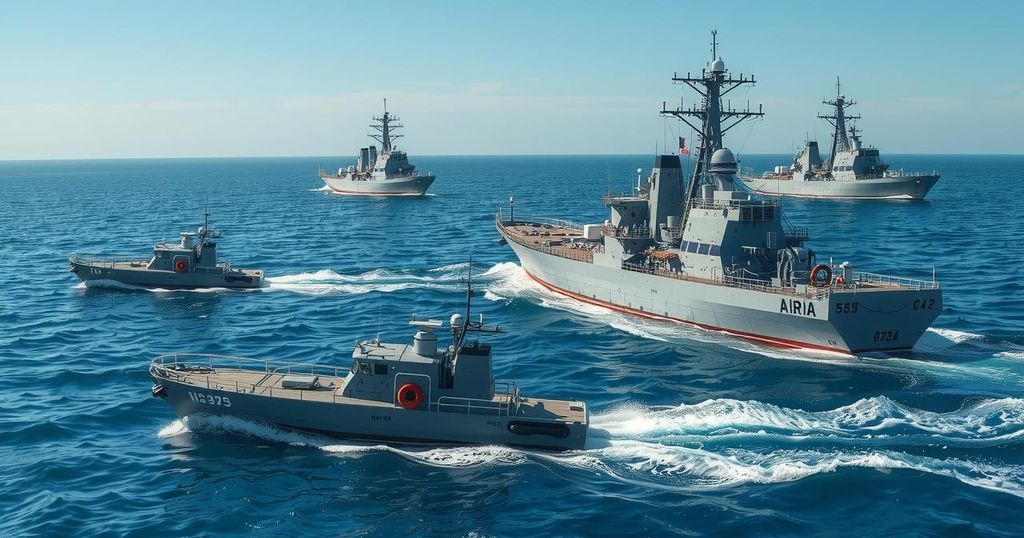Politics
AP, ASIA, BRP SIERRA MADRE, CHINA, DEFENSE, FERDINAND MARCOS JR, FOREIGN POLICY, GEOPOLITICS, GILBERT, HEGSETH, INDO - PACIFIC, JAPAN, MANILA, MARCOS, MEXICO, NORTH AMERICA, PETE HEGSETH, PHILIPPINES, SOUTH CHINA SEA, SOUTH CHINA SEA DISPUTE, U. S, UNITED STATES, WEST PHILIPPINE SEA
Nia Simpson
Hegseth Advocates Strengthened Deterrence Against China Threat in Philippines
U.S. Defense Secretary Pete Hegseth announced a ramp-up of deterrence against Chinese aggression in the South China Sea during his visit to the Philippines. He criticized past administration policies for enabling aggressors and emphasized rebuilding U.S. military strength. Joint military exercises and increased defense assistance were key initiatives discussed, reflecting a commitment to regional stability and allied cooperation amidst ongoing tensions with China.
During his visit to the Philippines, U.S. Defense Secretary Pete Hegseth announced that the Trump administration would enhance its deterrence efforts against global threats, particularly China’s aggression in the South China Sea. He attributed past aggressions to insufficient actions taken by the Biden administration and emphasized the need to rebuild U.S. military strength in the region.
Hegseth explained, “What we’re dealing with right now is many years of deferred maintenance, of weakness,” asserting the necessity to reestablish deterrence worldwide. He stressed the importance of allied partnerships in the Indo-Pacific region to mitigate the threat posed by China.
The Secretary remarked, “Friends need to stand shoulder to shoulder to deter conflict,” advocating for freedom of navigation within contested regions. Although he clarified that the U.S. was not preparing for war, he affirmed that a strong military presence would secure peace.
As part of his Asia tour, Hegseth’s visit included commitments for increased security assistance to the Philippines, including a previously announced $500 million fund for military modernization. He also indicated upcoming military joint exercises and the deployment of advanced military technology to bolster defense capabilities.
Notably, these exercises will occur in collaboration with thousands of American and Filipino forces, reaffirming mutual defense initiatives. Hegseth revealed that real war plans were being developed to create strategic dilemmas for China, urging partnerships to safeguard regional stability.
The Philippines’ Defense Secretary, Gilberto Teodoro, acknowledged the importance of alliances in deterrence efforts, reinforcing the need for preparedness against potential conflicts. He echoed concerns regarding the effectiveness of U.S. commitment to the region amidst shifting foreign policy dynamics under the Trump administration.
Tensions were apparent as Chinese officials criticized U.S. military cooperation with the Philippines. They cautioned against external interference in the South China Sea, highlighting a history of broken promises from the U.S. regarding its allies. Hegseth remained active and engaged with local military during his visit, participating in physical training and establishing rapport.
Associated Press journalists contributed insights to this report, which outlines the renewed focus on military collaboration and deterrence in the Indo-Pacific against emerging threats.
In summary, U.S. Defense Secretary Pete Hegseth’s visit to the Philippines marks a strategic shift under the Trump administration, focusing on enhanced deterrence against Chinese aggression. His discussions highlighted the necessity of U.S. military strength and allied cooperation in the Indo-Pacific region. The commitment to increased security assistance and joint military exercises signifies a proactive approach to preserving regional stability. However, Chinese criticism underscores the complexities of international relations and the challenges faced in maintaining U.S. alliances.
Original Source: www.channel3000.com








Post Comment